Modeling neural activity: from cells to laminae to brain areas
My name is Morgane Butler, I am a first year PhD Student rotating in Chand’s lab (remotely!) for the summer. I began the project with no experience in MATLAB and little experience in computational neuroscience. My hope was to improve my MATLAB skills and that I did!
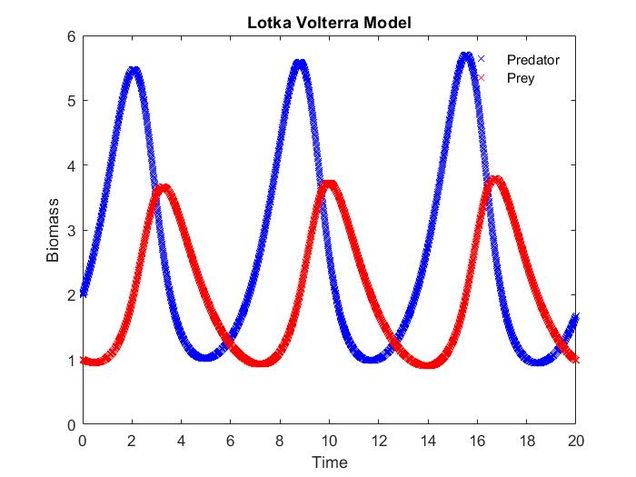 Dr. Chand had me start out with a simple model of Predator-Prey interactions called the Lotka-Volterra model. I used this exercise to understand important MATLAB basics and created an Euler method solver for the system of differential equations representing the model.
Dr. Chand had me start out with a simple model of Predator-Prey interactions called the Lotka-Volterra model. I used this exercise to understand important MATLAB basics and created an Euler method solver for the system of differential equations representing the model.
Next, I turned to Feedforward and feedback frequency-dependent interactions in large-scale laminar network of the primate cortex (Mejias et al. 2016). Based on empirical data this paper creates models of neuronal activity across layers of the cortex and scales it up to feed forward and feedback connections across brain areas such as V1 and V4.
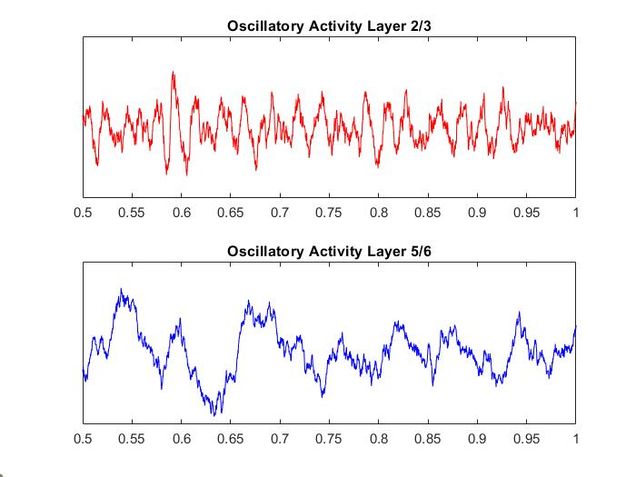
Using my code from my Euler method solver and the differential equations provided in the supplementary materials, I recreated the models of oscillatory activity, as seen to the left. With a bit of troubleshooting and Dr. Chand’s advice, I also conducted a power analysis of the oscillatory activity using a multi taper analysis from the Chronox MATLAB toolbox (http://chronux.org/). By modulating external inputs to the “neurons” I was able to show the behavior of the model in various conditions and across anatomical scales. I was able to first build E-I models that replicate the high-frequency oscillatory activity in Layer 2/3 and low frequency oscillatory activity in Layer 5/6 from the paper. I then scaled it up to connect supragranular (above layer 4) and infragranular (below layer 4) layers. Finally, I connected area V1 to area V4 accounting for anatomical feedforward and feedback projections between the areas. Notice in the power spectrum of connected layer 2/3 (top right, below) we see an emergence of activity reminiscent of layer 5/6 in the 3-12 Hz or alpha band.
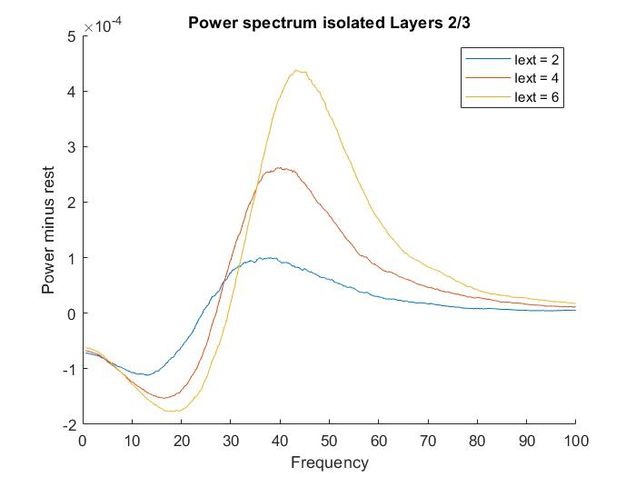
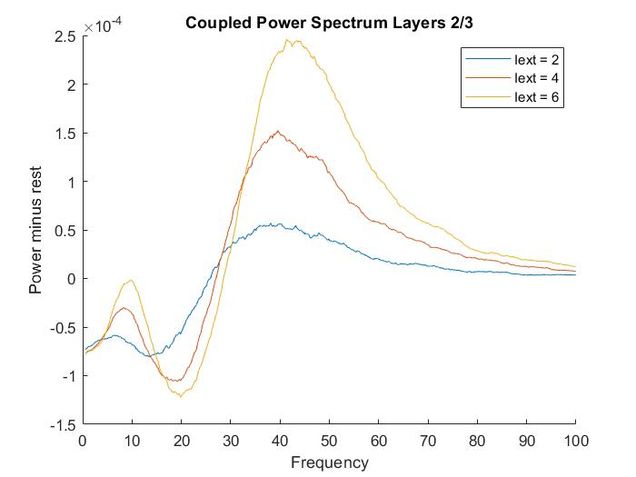
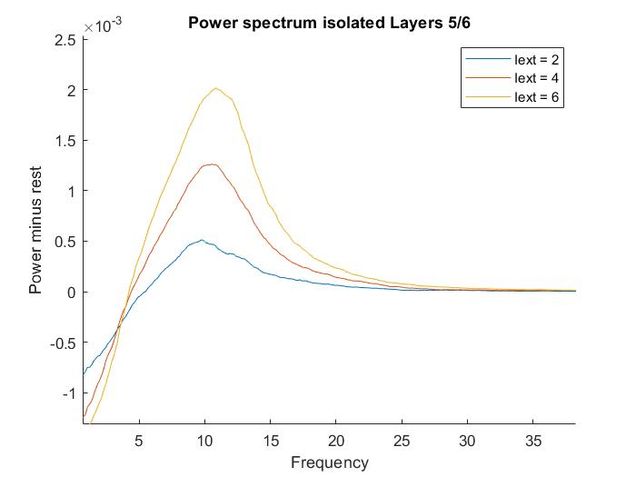
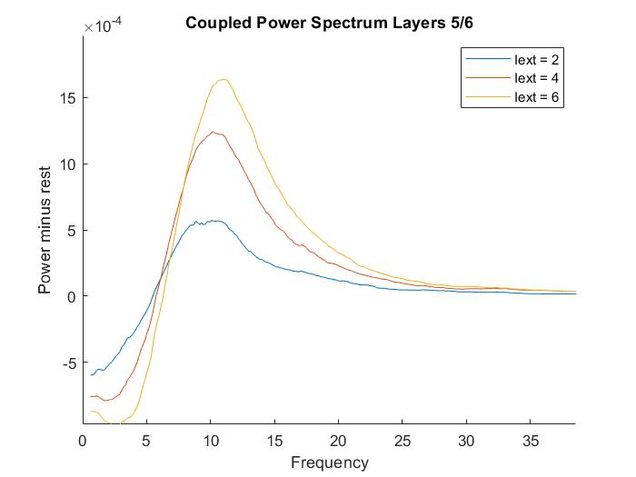
Thoughtfully creating models such as this one allows us to form and develop hypotheses when we do experiments in the wet lab. If you are interested in looking deeper into my code and reading a more complete write-up please refer to my GitHub.
I can now confidently say that MATLAB is something I will use in my near future and I had a great time learning this new skill and growing as a scientist in the Chand Lab!